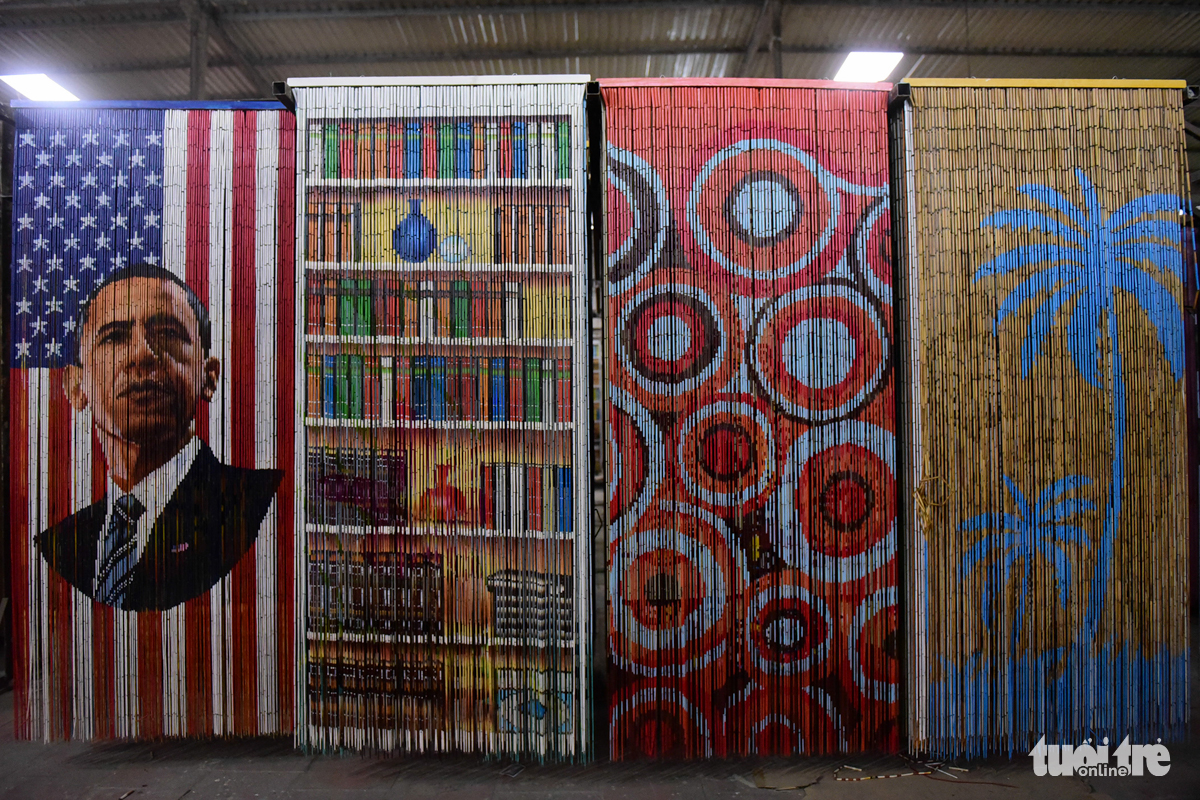The art of making bamboo curtains was once the pride of a rural commune in Ho Chi Minh City, but local craftsmen are struggling to find worthy successors.
Residing in the small commune of Tan Thong Hoi in Cu Chi District, about 30 kilometers from the center of Ho Chi Minh City, are families that have for decades dedicated to the craft of making bamboo curtains.
The arduous process begins with chopping the stem of the phyllostachys plant, a genus of Asian bamboo that is typically smaller in diameter, into six centimeter long sections.
The cigarette-like bamboo pieces are then left to dry in the sun, before being strung together into a curtain.
This stage alone has created jobs for hundreds of house-bound locals in the suburban commune, who are either unqualified or too old to find other jobs.
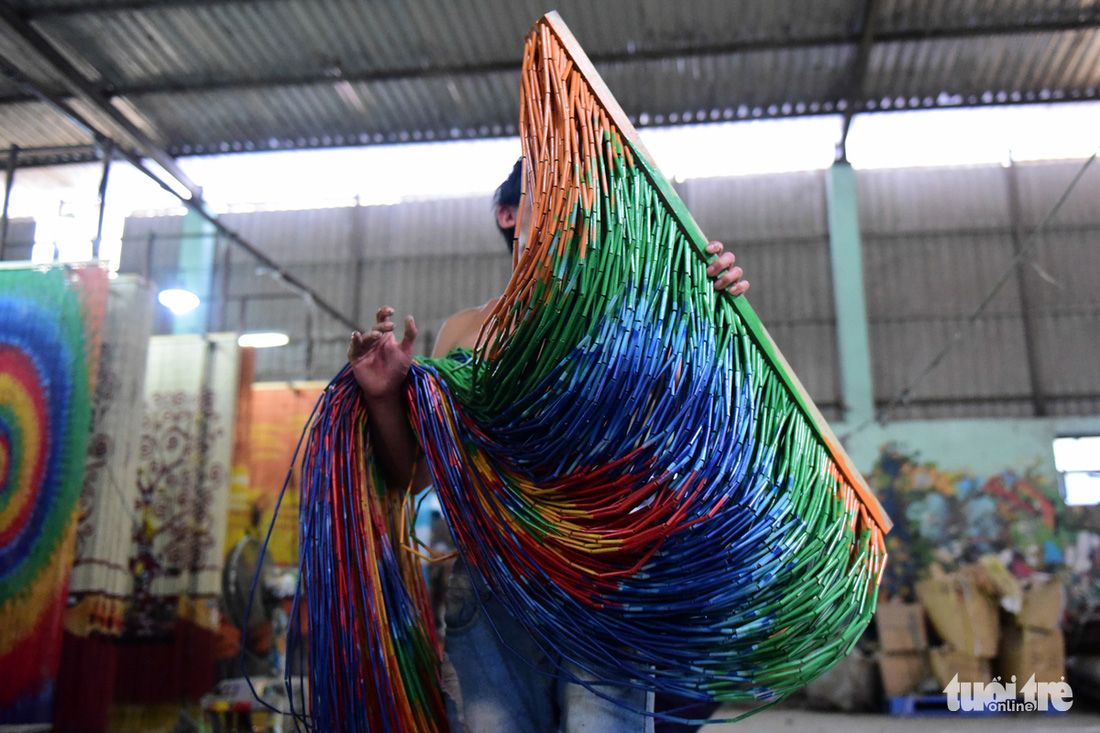 |
| Located about 25 kilometers from the center of Ho Chi Minh City is a commune famous for its colorful bamboo curtains. Photo: Tuoi Tre |
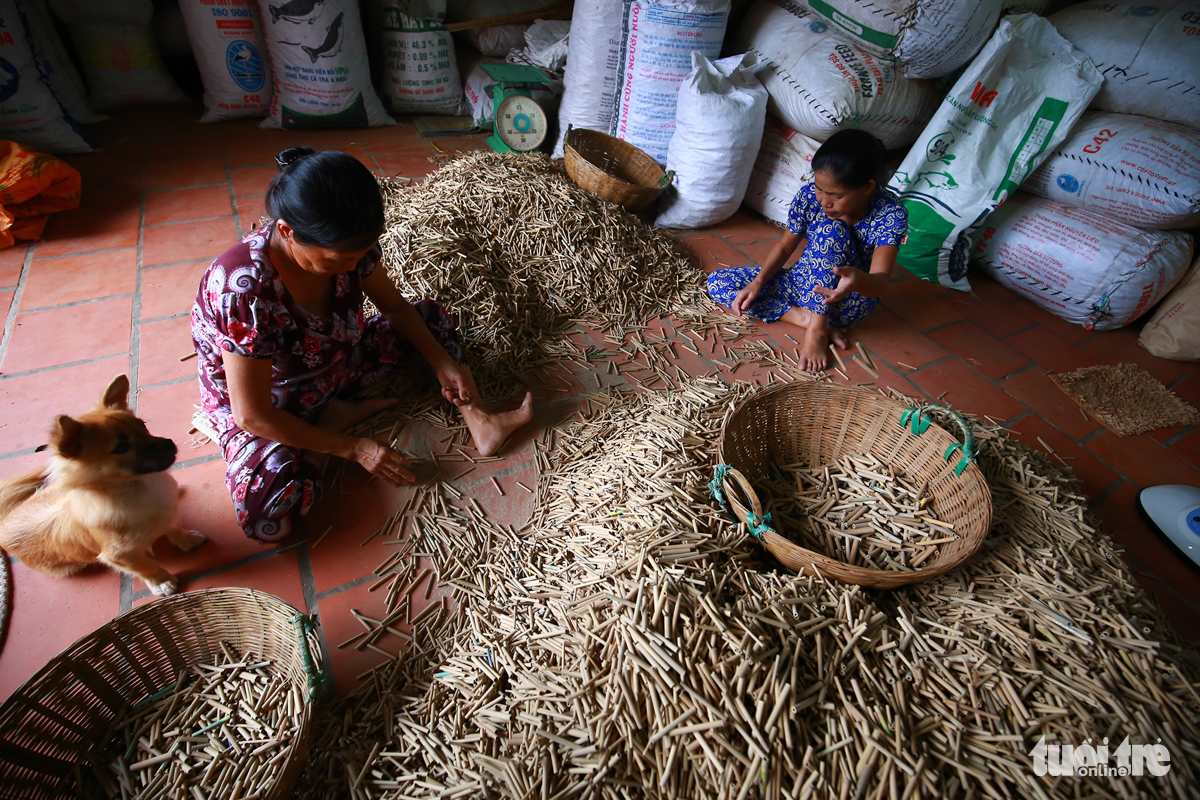 |
| The stem of an Asian bamboo genus is chopped into six centimeters long sections and left to dry in the sun. Photo: Tuoi Tre |
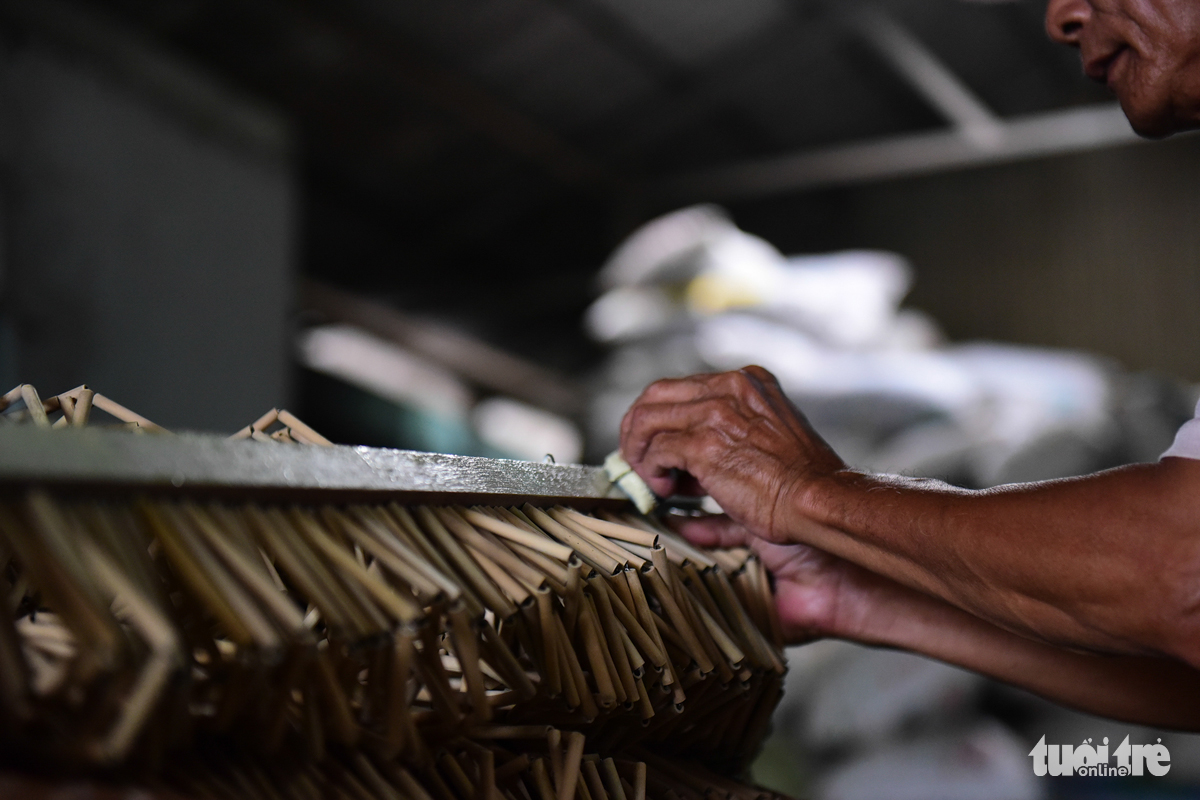 |
| Dried bamboo pieces are strung together into a curtain. Photo: Tuoi Tre |
Plain bamboo curtains are strenuously hand-painted by skilled artisans to breath a new life into the monochromic furniture.
Each artisan can finish painting around three curtains per day, at the wage of VND100,000 (US$4.4) apiece.
Forty-seven-year-old Nguyen Van Ben’s is among a few families in Tan Thong Hoi that still hold onto the decades-old business.
There are currently 30 workers employed by Ben’s workshop.
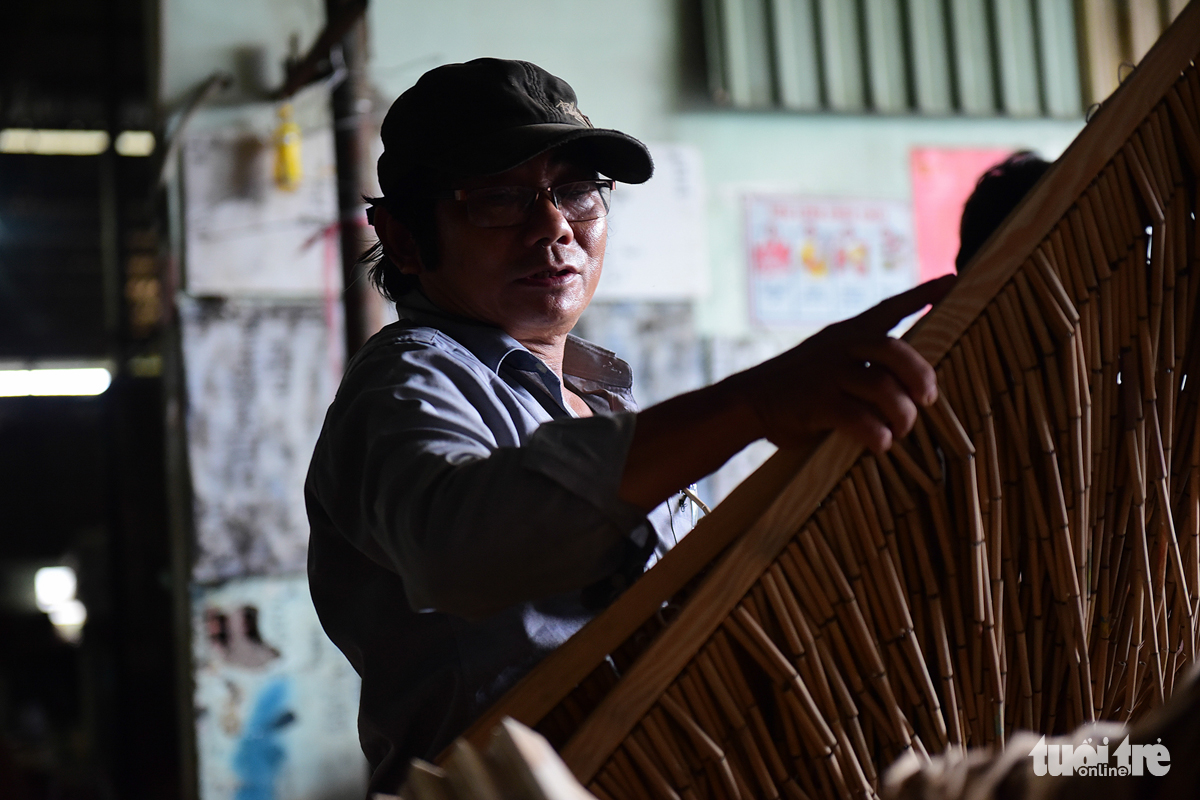 |
| Nguyen Van Ben, owner of a bamboo curtain workshop in Tan Thong Hoi Commune, Cu Chi District, Ho Chi Minh City. Photo: Tuoi Tre |
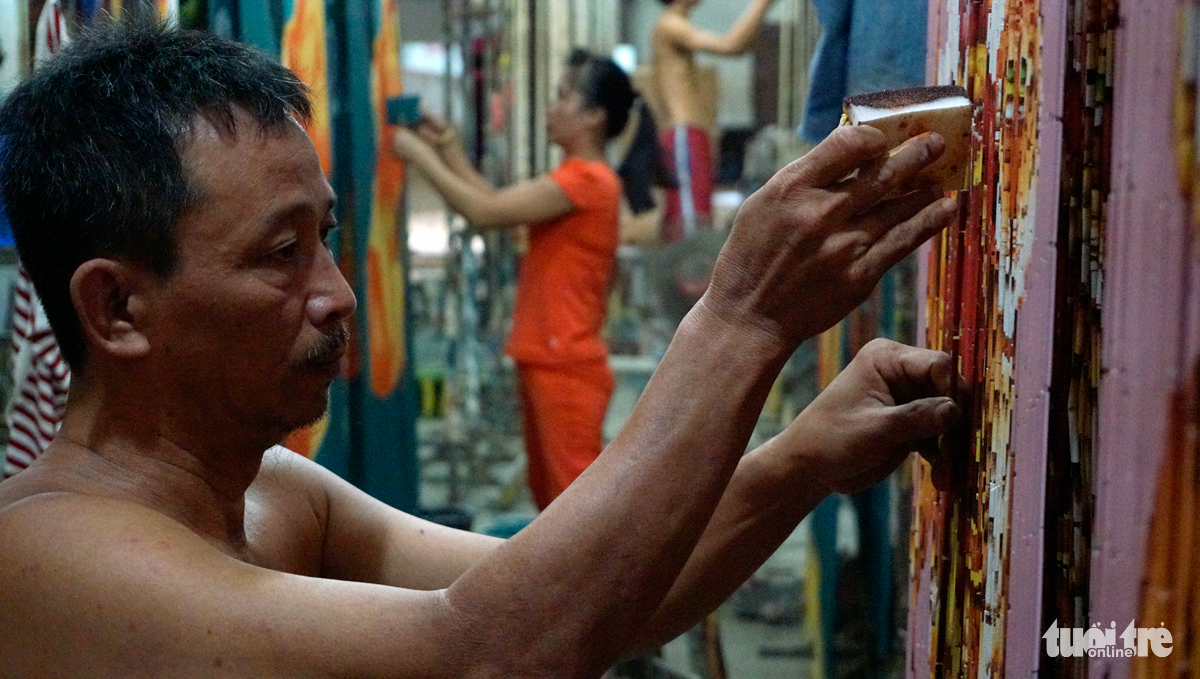 |
| An artisan carefully hand-paints tiny pieces on a bamboo curtain at the workshop of Nguyen Van Ben. Photo: Tuoi Tre |
Ben spoke of how he had seen the craft at its prime between 1980 and 2000, when as many as four million square meters of bamboo curtains were produced yearly by workshops across Cu Chi, most of which were exported to the former Soviet Union and Eastern Europe.
According to Ben, the handcrafted products are still today widely favored by customers in Europe, the U.S. and Japan, which has helped keep the tradition alive by providing enthusiasts like himself with a stable income.
However, unfavorable working conditions and the dirty nature of the job have discouraged youths from inheriting the family business, he said.
 |
| An artisan carefully hand-paints tiny pieces on a bamboo curtain at the workshop of Nguyen Van Ben. Photo: Tuoi Tre |
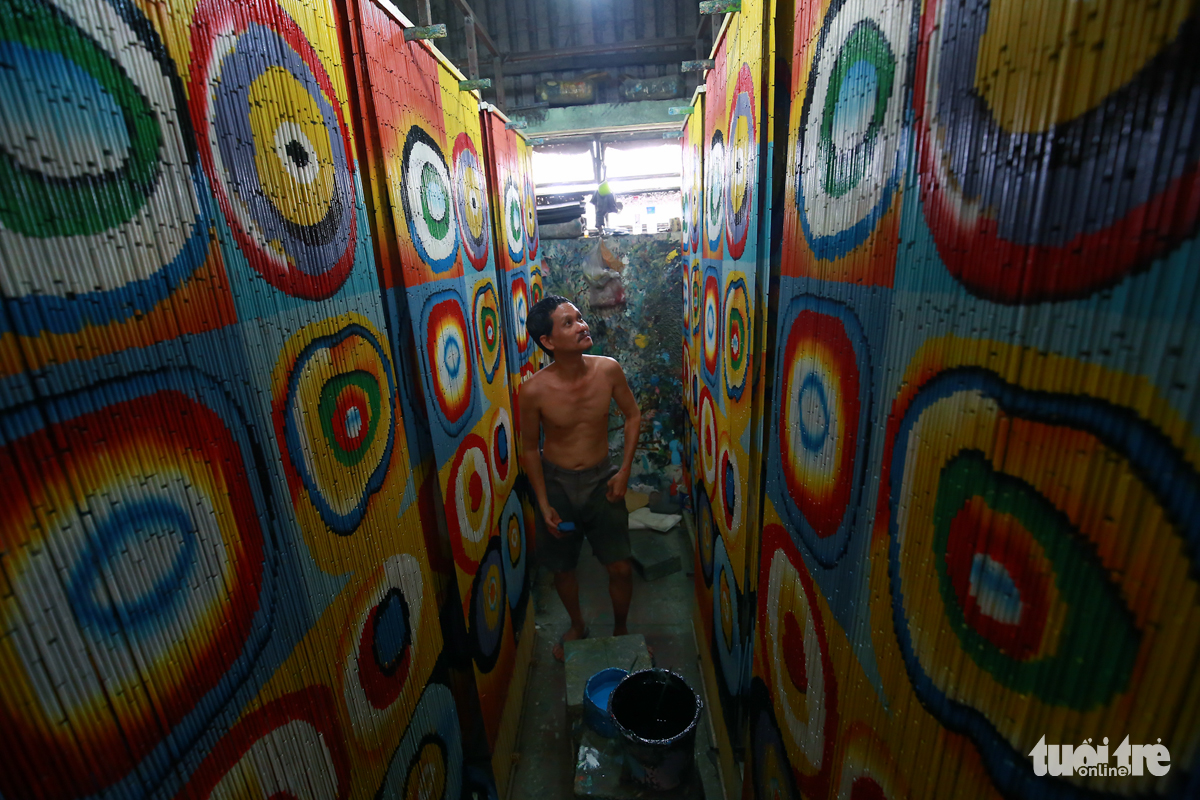 |
| An artisan marvels at his works at the workshop of Nguyen Van Ben. Photo: Tuoi Tre |
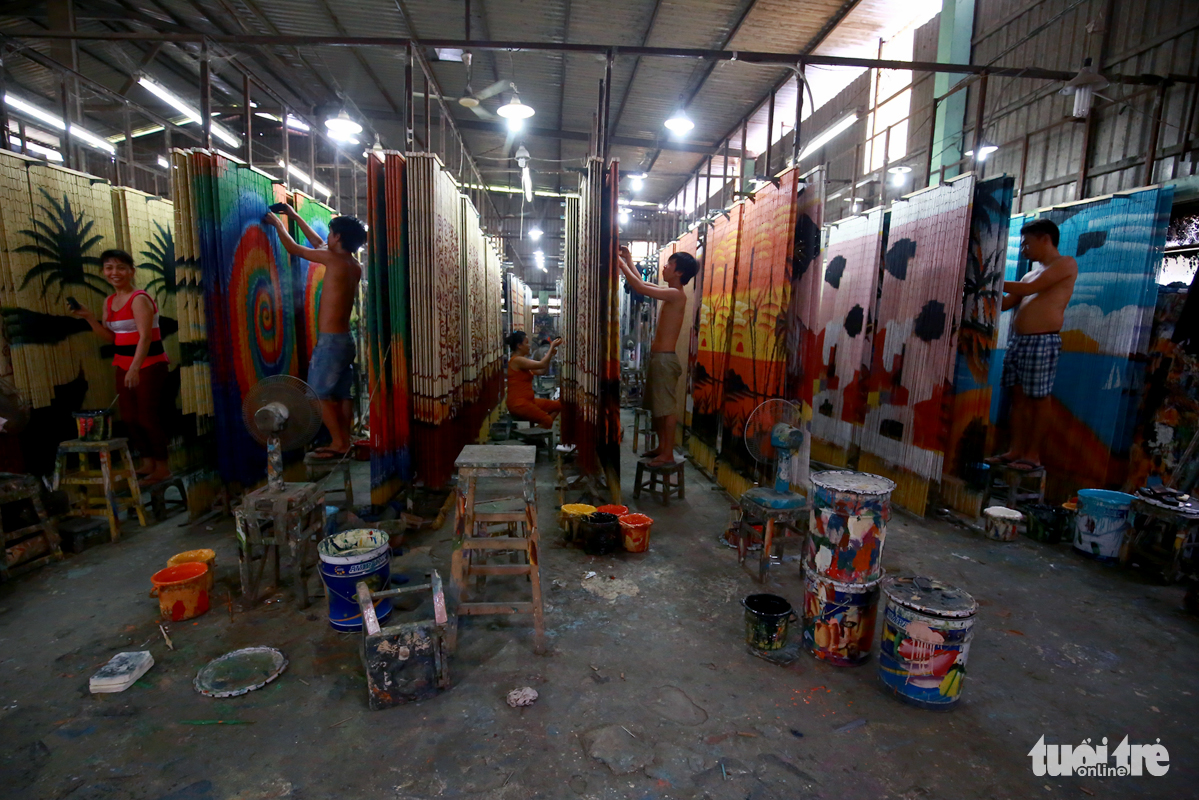 |
| Workers hand-paint bamboo curtains at the workshop of Nguyen Van Ben. Photo: Tuoi Tre |
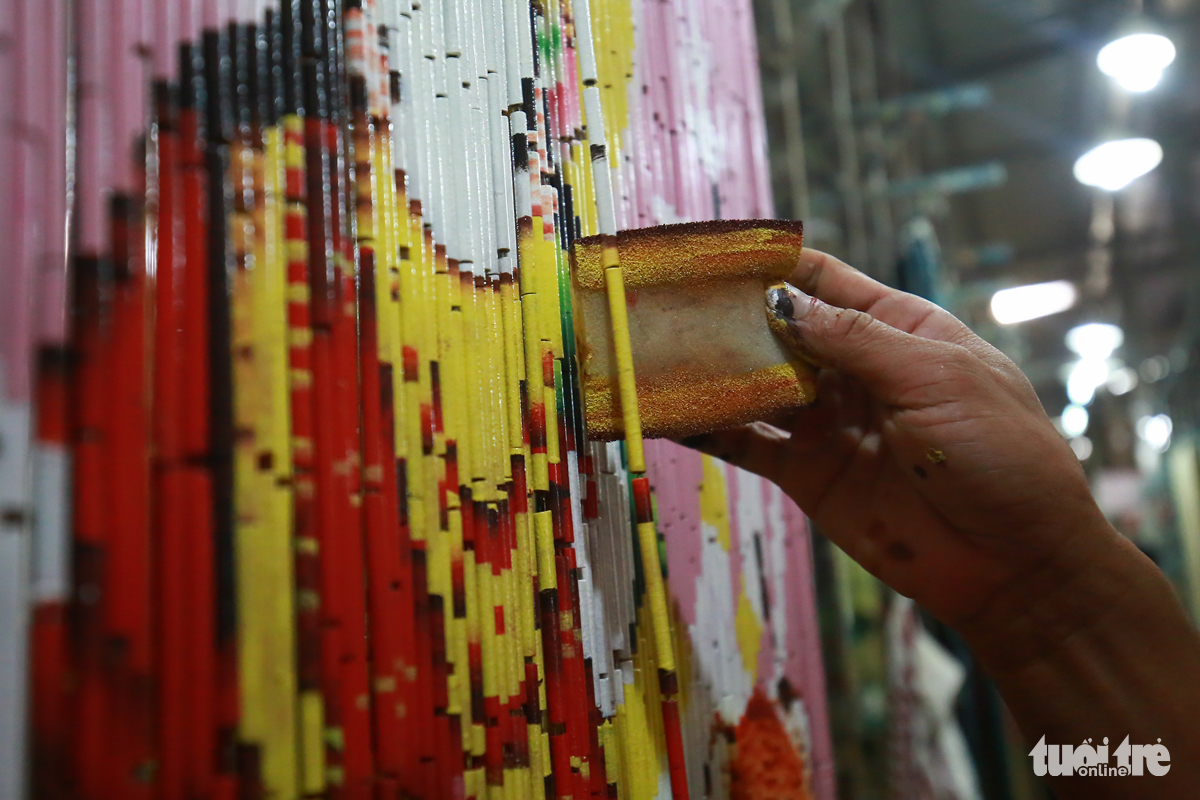 |
| An artisan carefully hand-paints tiny pieces on a bamboo curtain at the workshop of Nguyen Van Ben. Photo: Tuoi Tre |
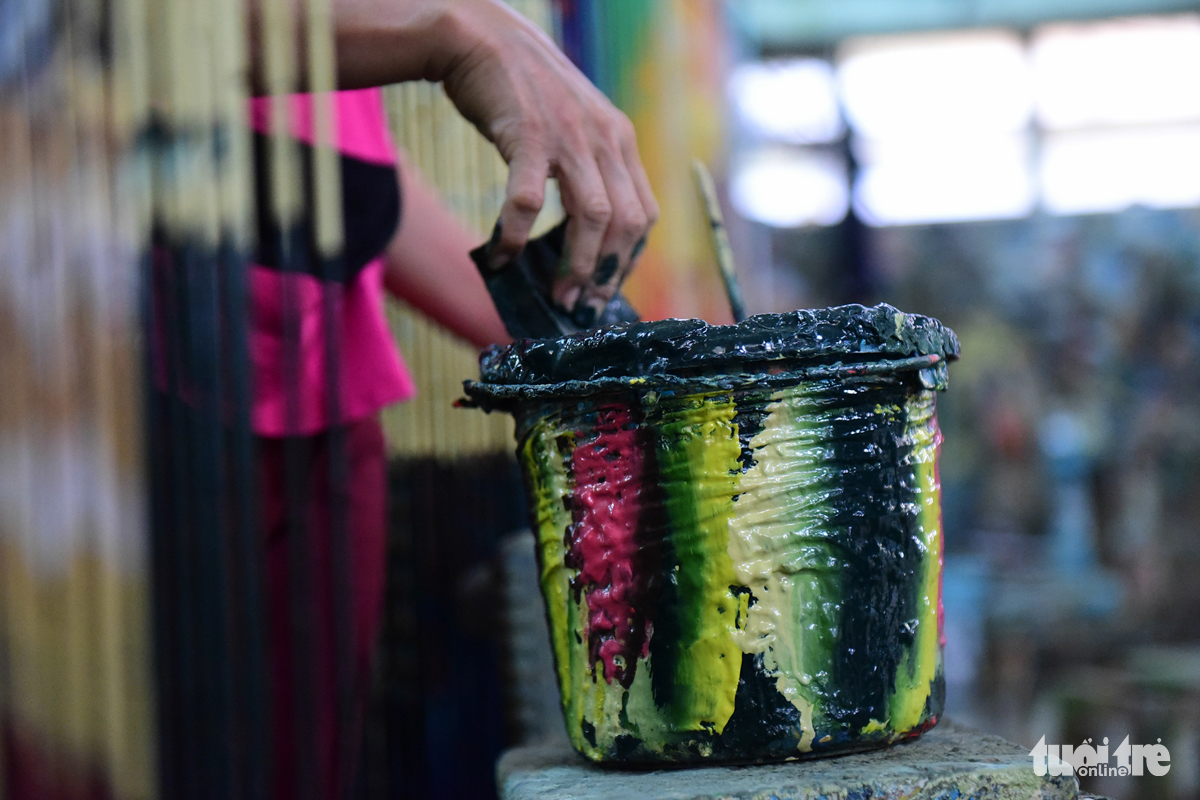 |
| The job of hand-painting bamboo curtain can be dirty and strenuous. Photo: Tuoi Tre |
 |
| An artisan carefully hand-paints tiny pieces on a bamboo curtain at the workshop of Nguyen Van Ben. Photo: Tuoi Tre |
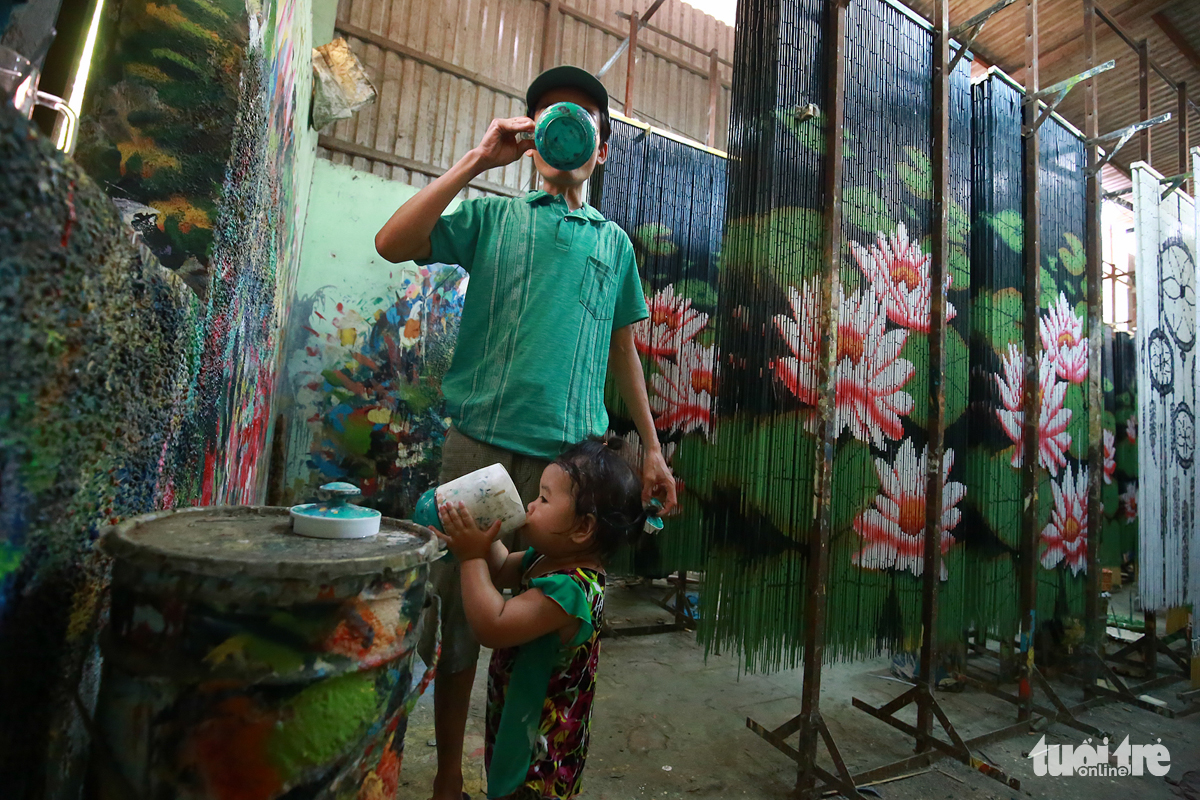 |
| A worker drinks water as he takes a short break from work at the workshop of Nguyen Van Ben. Photo: Tuoi Tre |
Like us on Facebook or follow us on Twitter to get the latest news about Vietnam!



